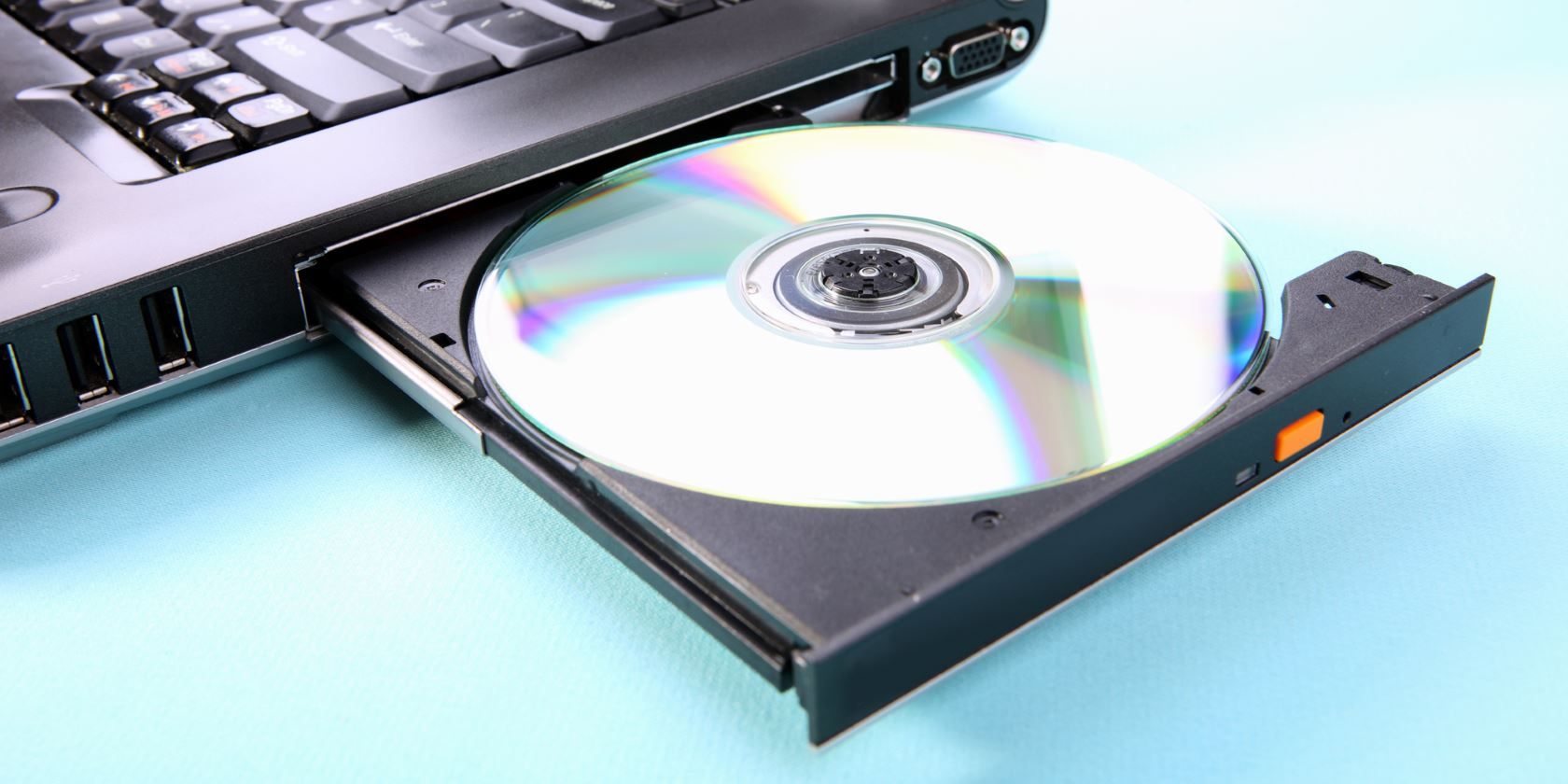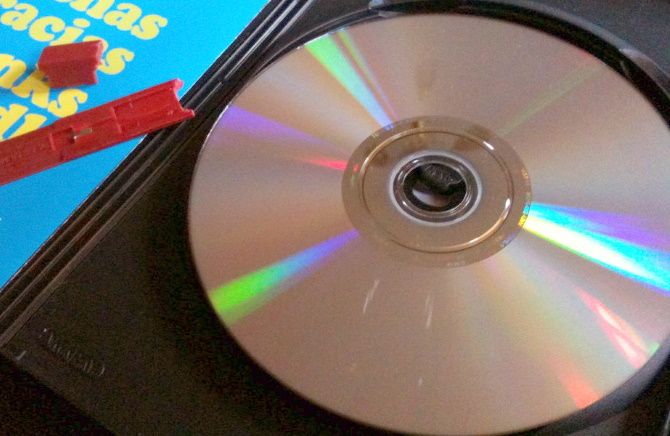
Optical media is fragile. A few scratches here and there and your CDs and DVDs can easily become coasters on your table. I have had plenty of them myself.
Let’s look at some of the ways to repair damaged CDs and DVDs and recover data from those scratched discs. These tips will also work on game discs for popular consoles, karaoke discs, and more.
Anatomy of an Optical Disc
Before learning how to repair a damaged CD or DVD, it’s worth learning how optical discs work. You might know that a small laser reads data from the CD (which is why we use the term “optical disc”) but how is the disc constructed?

In general, an optical disc is a sandwich. While the design differs depending on whether it is a CD, DVD, Blu-ray, or a derivative, the principle is consistent. A layer of aluminum (or similar material) is sandwiched between two layers of polycarbonate plastic. On one side, you’ll find the label, while the other side is clear.
The plastic protects the data and helps to focus the laser, which reads the data from the aluminum layer.
Scratches in the plastic layer are usually what cause CDs and DVDs to fail.
Two Types of CD/DVD Scratches
Scratches on optical media generally come in two broad types: perpendicular, and those that run along the grooves.
- Perpendicular scratches: these run from the center to the edge of the disc. They’re bad, but not the worst.
- Circular scratches: these are more damaging, running along the spiral.
Perpendicular scratches are usually not so bad as the laser can jump over the scratch and continue reading. However, concentric scratches are more devastating, potentially causing bigger jumps or even resulting in the disc being unreadable.
If your CD or DVD has more circular scratches, the chances of recovering data are small. Fortunately, several DIY options are available to you for repair.
5 Ways to Repair a CD or DVD
Some hands-on methods have been discovered to help repair scratched CDs and DVDs. Note that these fixes are not guaranteed. Similarly, if you should have success, it is advisable to close the disc immediately. The fix typically won’t last long-term.
- Clean the disc using a soft lint-free cloth and a dab of warm water and mild detergent. This is the most reliable fix, as it is the most common. You wouldn’t believe how much trouble greasy hands and food residue can cause!
- Fill scratches with toothpaste. Certain substances can fill the gaps caused by scratching and when polished enable the laser to read the data from the disc.
- Soften scratches with heat from a 60W lightbulb. If you have access to an incandescent 60W bulb, exposing the scratched disc to the heat can soften the plastic a little, potentially enabling the data to be read.
- Fill the scratch with a wax-based product. Lip balm, shoe polish, and other wax-based products can fill the scratch in much the same way as toothpaste.
- Cover holes in the data layer with pen and tape. Not all discs are damaged by scratches. Where holes have perforated the data layer, cover these with tape and a dark pen to ensure the disc can be read.
For more details on each of these, check our guide to fixing scratched DVDs with toothpaste and other household items.
Tips to Recover Data From a Damaged CD/DVD
Running into trouble recovering data from your damaged optical disc? Try these tips:
- Use a CD/DVD writer rather than a reader. Writers are generally more precise and can see the tracks better.
- Where possible, attempt recovery on the same drive that was used to create the disc. Chances of success have been found to increase if you use the same drive or at least the same manufacturer.
- Unable to read the data with your operating system? It’s time to employ some recovery tools.
Additionally, be forward-looking with your recovery. If it happened once, it could again.
How to Recover Data From a Damaged CD/DVD
In some cases, you may need to use an optical disc recovery tool to help back up the disc contents.
Many software utilities are available for this, but most are out of date, rarely updated, and typically don’t work. The reason? Well, few people use CDs and DVDs these days. Games may ship on DVD and Blu-ray, but digital versions are typically available too. Few people use optical media for storage.
So, what are your options? Well, it depends on your operating system.
Recover Damaged CDs and DVDs in Windows
Recovering data from a scratched CD or DVD in Windows isn’t easy. One good option is IsoBuster, which can create a byte-by-byte copy of your disc’s contents.
Download: IsoBuster (Free trial | $30 for Pro version)
However, you may prefer to use Roadkil’s Unstoppable Copier utility. Our detailed guide to Unstoppable Copier will help you back up your scratched DVD on Windows.
Download: Unstoppable Copier (Free)
Read and Backup a Scratched DVD on macOS
The simplest option on macOS is to use the Disk Utility tool to clone the fixed optical disc. This archives it as a disk image on your computer.
Open Disk Utility, select the disc in the left-hand pane, then File > New Image. Follow the steps to name the DVD file, select a save location, then Save to start the backup.
Once done, you’ll be able to mount the disc image without requiring the physical disc.
Recover Data from a Scratched Disc in Linux
Like Windows, you can try Unstoppable Copier for Linux, available from the same link.
You can also try ddrescue. This command line tool offers many options covering all types of storage media.
Download: GNU ddrescue (Free)
Fix and Recover Data From Those Damaged DVDs
Whether you used toothpaste or found some other way to make the disc readable, you’ll be pleased it works. But how long will this moment of success last?
It’s worth considering some general tips going forward:
- Once recovery is successful, immediately backup the contents and/or create an ISO copy of the disc.
- Always use high quality optical media.
- Take good care of your CDs
For the best results, we recommend taking advantage of the low price of hard disk storage and cloning the discs as ISO files. These can be archived until needed, then either mounted as virtual discs or burned to fresh media.
Trouble with storage devices? Here’s how to repair a dead hard disk drive and recover your data.
Image Credit: Asiorek/Depositphotos
Read the full article: How to Repair Damaged CDs or DVDs and Recover Data
from MakeUseOf https://ift.tt/2lLfaho
via IFTTT

0 comments: